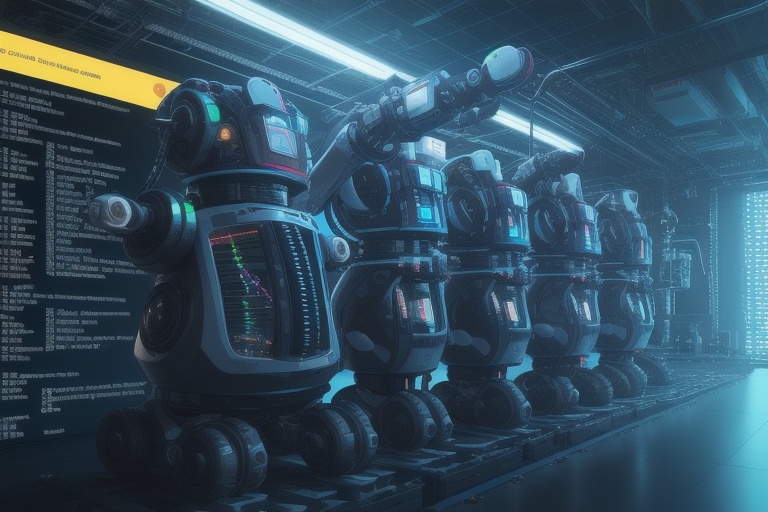Artificial Intelligence (AI) and Machine Learning (ML) are not just buzzwords—they are driving forces behind the technological transformation that has swept across the globe. Their integration into the fabric of digital innovation has profoundly affected the way software is crafted, offering new horizons in efficiency and creativity across a multitude of industries.
The Transformative Impact of AI and ML in Today's World
Artificial Intelligence (AI) and Machine Learning (ML) are not just buzzwords—they are driving forces behind the technological transformation that has swept across the globe. Their integration into the fabric of digital innovation has profoundly affected the way software is crafted, offering new horizons in efficiency and creativity across a multitude of industries.
AI can be envisioned as the broader canvas of machines displaying human-like cognition, decision-making, and problem-solving abilities. ML, on the other hand, is a more focused art within the AI spectrum. It involves developing self-evolving algorithms that enable machines to glean insights and perform tasks without being directly programmed for every contingency. These systems sift through and learn from data, thus making increasingly accurate predictions or decisions, often exceeding human capabilities in speed and precision.
Revolutionizing Industries with Data Analysis
The surge in data generation has been one of the hallmarks of the digital age. AI and ML stand at the forefront of interpreting this data deluge, unearthing valuable patterns and insights that have transformed decision-making processes. In the past, such data was largely underutilized, but now AI and ML systems can forecast trends, identify inefficiencies, and suggest solutions in real time. For businesses, this means the possibility of fine-tuning their operations and strategies for optimum outcomes, often with a level of granularity that was once unimaginable.
Computer Vision: Seeing Beyond Human Capability
Imagine a world where machines interpret visual data with a depth and accuracy that rivals—or even surpasses—human vision. This is the realm of computer vision, where AI and ML empower machines to recognize faces, detect objects, and navigate spaces autonomously. Such capabilities have vast implications, from enhancing security through intelligent surveillance systems to enabling the visually impaired to interact more seamlessly with their environment.
Natural Language Processing: Bridging Human-Machine Communication
AI and ML have also shattered the barriers of language, opening up new frontiers in how we interact with machines. Natural language processing (NLP) allows computers to understand and respond to human speech and text in a way that feels both natural and intuitive. This breakthrough has overhauled customer service platforms, provided automated translation services, and fostered more personalized virtual assistants, ushering in an era of improved accessibility and user experience.
The Healthcare Paradigm Shift
Perhaps one of the most poignant examples of the power of AI and ML lies within the field of healthcare. Here, these technologies are offering hope for early disease detection, accurate diagnostics, and personalized treatment plans. With the capacity to analyze complex medical data and recognize patterns that might elude even seasoned professionals, AI and ML are on course to redefine patient care and outcomes.
Automation and Robotics: Enhanced Productivity and Safety
The synthesis of AI and ML within robotics has initiated a new chapter in automation. In industrial settings, smart robots can streamline production, reduce errors, and carry out tasks in environments that are hazardous to humans. This marriage of technologies is not just about replacing human labor—it's about complementing it, creating systems that optimize the unique strengths of both humans and machines.
Navigating the AI and ML Learning Curve
For today’s programmers and developers, understanding and leveraging AI and ML is no longer optional—it’s a necessity. The ongoing evolution of these technologies promises a future where the only constant is change. To remain relevant and thrive in such a dynamic landscape, acquiring the requisite skills to navigate the intricate world of AI and ML is indispensable. Learning how to design, develop, and deploy intelligent systems will be the key to unlocking new possibilities and driving innovation forward.
Staying at the forefront of AI and ML will require a commitment to continuous education and adaptation, but the rewards are without precedent. In a world where these technologies are reshaping the boundaries of what's possible, the only limit is our willingness to explore and embrace their potential. As we look to the future, the convergence of AI and ML with industries ranging from finance to transportation paints a picture of a society heightened by technology, accelerated by efficiency, and inspired by the transformative power of intelligent machines.
Information for this article was gathered from the following source.




